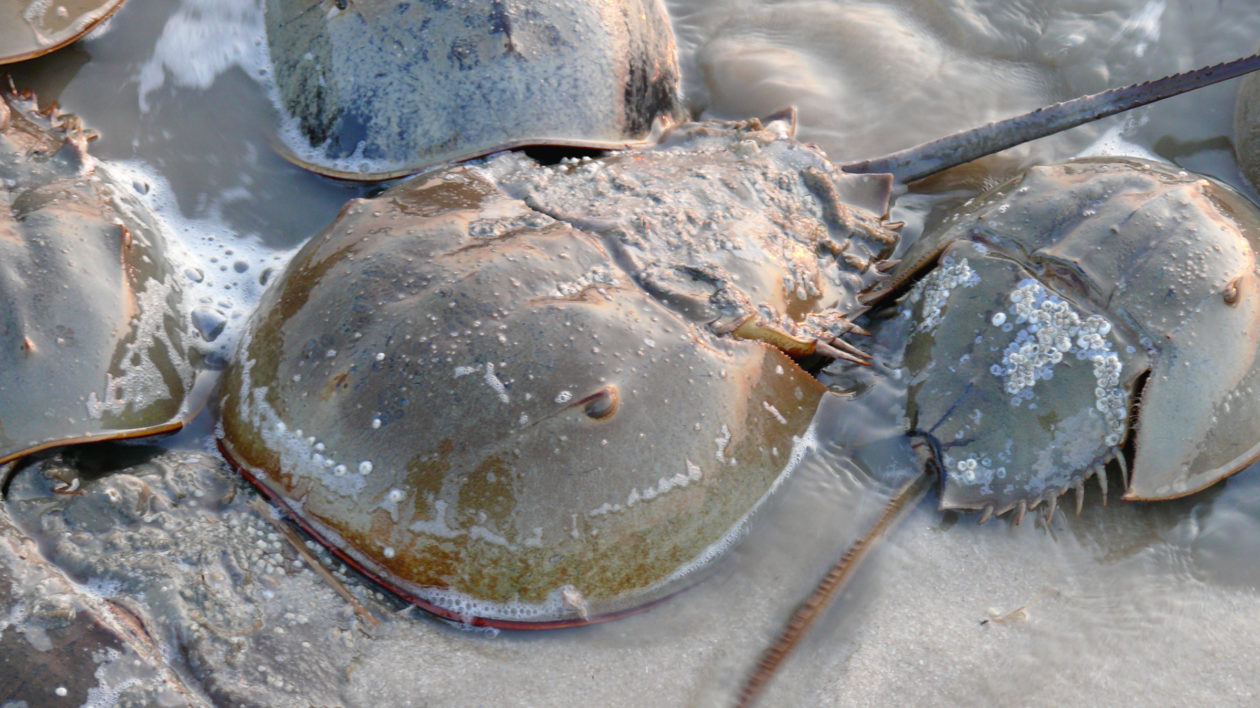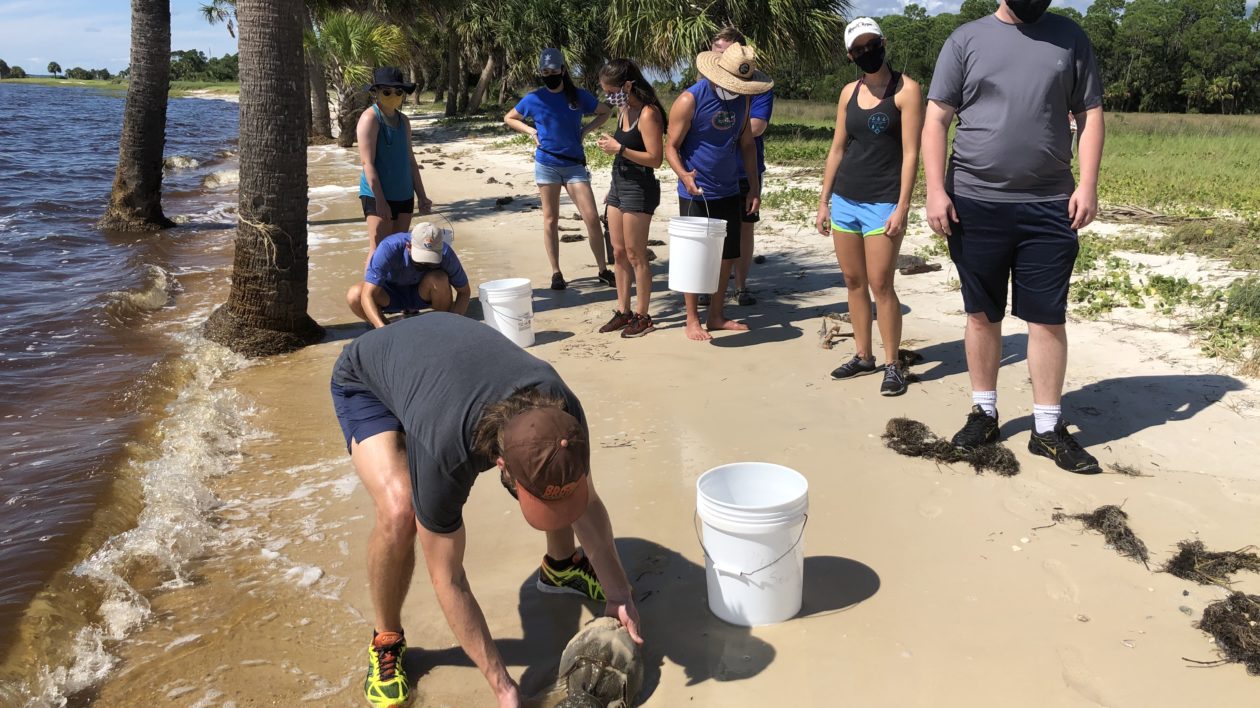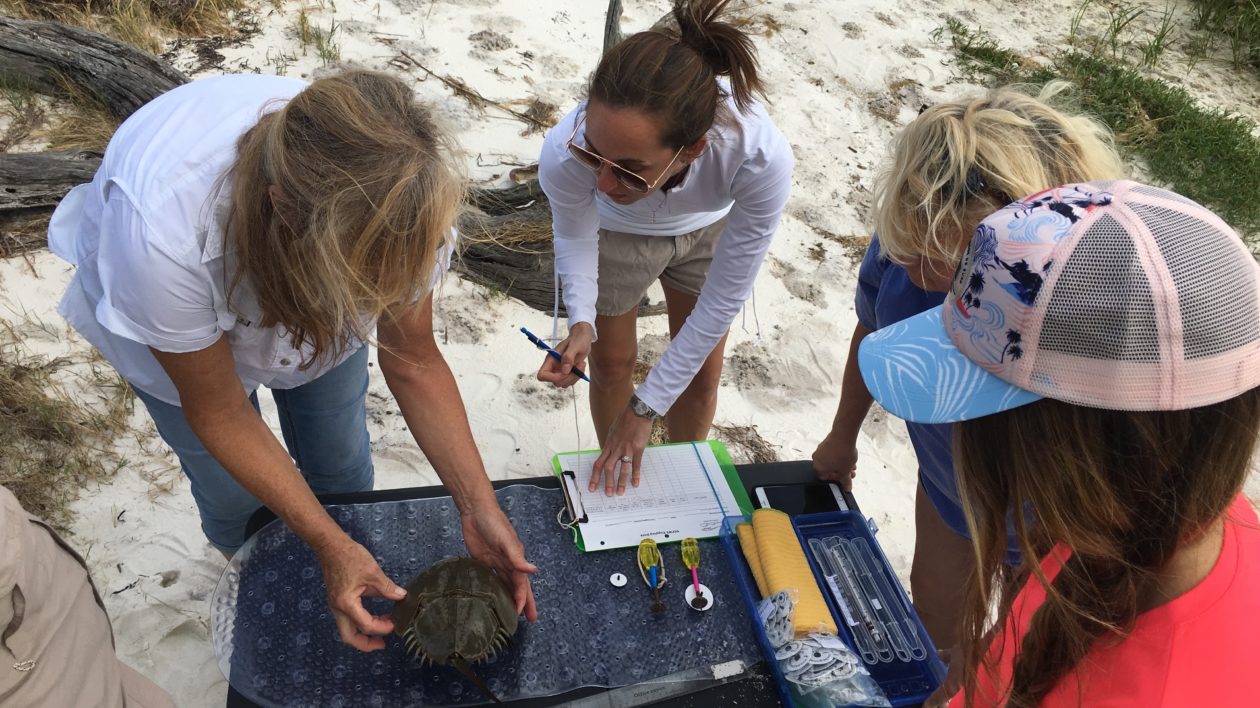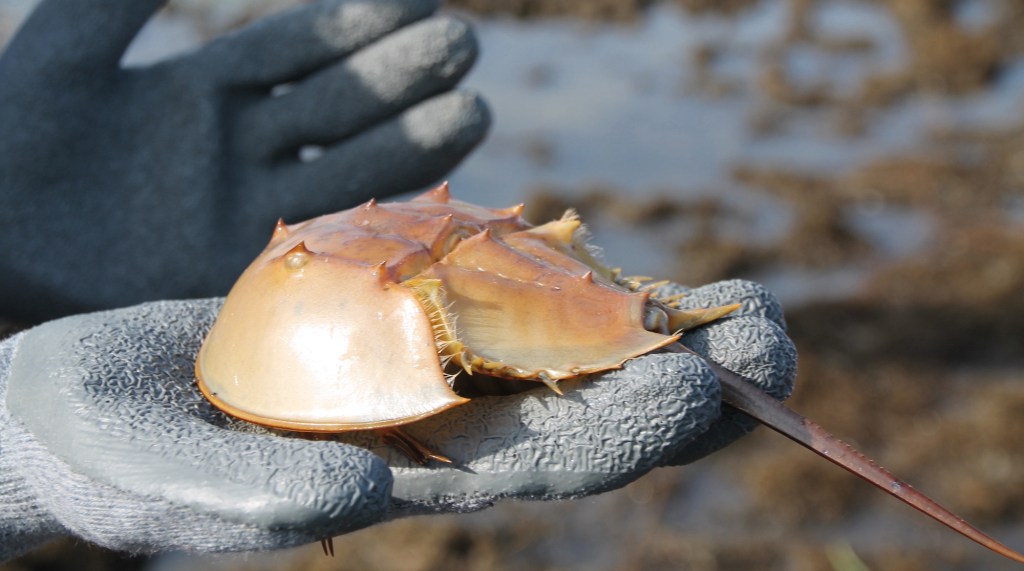For a couple months each spring (and sometimes in the fall) horseshoe crabs scurry out of the ocean to lay and fertilize eggs in the sandy beach.
It’s the only time of the year the basketball-sized crab is consistently visible to most people, and it’s a critical time for researchers hoping to assess their populations.
Unfortunately, trying to count mating horseshoe crabs on beaches that stretch from Maine to Florida just isn’t possible for even the most robust research teams.
So in 2015, Florida scientists and wildlife managers turned to regular folks with an interest in nature and the outdoors but not professional biologists. Researchers spent a day training volunteers and sent them out to monitor more than 1,300 miles of Florida coastline.
And a new paper published in the journal Citizen Science: Theory and Practice, shows just how useful that information is. Data collected by adequately trained citizen scientists is actually just as accurate as the information collected by professional scientists.
“It’s being used to set and estimate population numbers and then used to set harvest quotas for horseshoe crabs,” says Savanna Barry, co-author of the study and regional specialized agent with University of Florida Extension and Florida Sea Grant. “That’s the gold standard for me, when it’s used in real decision making. There’s an educational value to the surveys, but I really love to see when the management agencies trust what they are getting.”
Does the growing body of information showing the usefulness of citizen science mean that volunteers can replace professional researchers on projects? Of course not, the co-authors say, but it does make possible many projects that just wouldn’t be doable with small research labs.
“Manpower is always so limiting,” Barry says, “And state budgets are always unpredictable.”

Consider the Horseshoe Crab
Horseshoe crabs are an ancient sea creature more closely related to a scorpion or spider than an actual crab. Ten legs carry a hard shell with a long tail stretching out the back. Gills on the underside allow them to breathe.
As a species, they’ve been around for hundreds of millions years, even longer than dinosaurs. They even predate trees. Females are bigger than males, and instead of mating then laying eggs, the females drop eggs in sandy nests and then males, which have attached themselves to the females, release sperm directly on top of the eggs, says Berlynna Heres, Florida Fish and Wildlife Commission researcher and lead author of the recent paper “Using Citizen Science to Track Population Trends in the American Horseshoe Crab.”
Their numbers are likely declining nearly everywhere, a byproduct of bait harvest, habitat loss in the form of shoreline hardening, sea-level rise, and biomedical harvest.
While most of those seem like common conservation threats – habitat loss or overharvesting – the biomedical harvest is a unique one. Horseshoe crab blood is an odd shade of blue, and is used to help test for endotoxins(essentially contaminants) in medical equipment and vaccines. Most of the horseshoe crabs harvested in the U.S. for their blood are caught, bled, then released to rehabilitate, but research shows many die and the ones that are released alter their behavior and struggle to reproduce.
And while populations are clearly struggling in some places (so much so that New Jersey closed its horseshoe crab bait fishery), data on populations in Florida was decidedly lacking. In fact, most of the information before 2015 on horseshoe crab populations in Florida came as a byproduct of trawls targeting finfish, according to the paper.
“With 2,170 km of Florida coastline to cover, it is virtually impossible to study Florida horseshoe crab populations without the help of volunteers,” the paper says.

Asking for Help
Florida wildlife managers have been interested in horseshoe crab populations for decades. So much so that in 2002, the Florida Fish and Wildlife Conservation Commission asked anyone from the public wandering beaches to report horseshoe crab observations. The commission wanted anything from spawning location, date, time and number of crabs observed, to spawning status and the presence of juveniles.
People could report over phone, email or an online survey. Officials created an app in 2018 to help with reporting, and added a GPS component.
The data points were useful, but came with a variety of caveats since observers had no training and limited contact with researchers. The information did give horseshoe crab managers an idea of where horseshoe crabs were and were not, though, as well as common spawning areas.
A much larger endeavor called Florida Horseshoe Crab Watch started in 2016 as a way to more formally work with volunteers to survey the critters.

Volunteers went through a day of training including an overview of horseshoe crab biology, anatomy and life history, an introduction to citizen science, a demonstration of the survey, and a practice session in the classroom. Managers hosted multiple sessions throughout the year across the state.
It culminated in going to a beach during high tide when horseshoe crabs were likely to be spawning to handle live crabs.
In the first four years, volunteers completed more than 1,300 surveys, counted well over 45,000 crabs, and tagged almost 5,000 of them.
“To be able to handle and tag an animal as a volunteer is unusual. They are covered under special activity license and they pick the crabs up as they see them on the beach and weigh and measure them and insert a tag and release them,” Heres says. “It’s a pretty cool opportunity a lot don’t have.”
Even more impressive, size and mass data of horseshoe crabs collected by trained volunteers was no different than that collected by professionals.

The Values of Citizen Science
Barry, Heres and others working in citizen science are quick to extoll the virtues of helping people understand more about the world around them.
“If you are actively helping with citizen science programs, you have a better understanding of what is available to you, what is important, what wildlife matters, and how you’re helping it,” Heres says.
But they also realized through this study that citizen science isn’t just about offering citizens a way to become involved. It’s about collecting data that may otherwise never be recorded. It can also be about saving money.
Volunteers spent more than 10,600 hours working on Florida Horseshoe Crab Watch. The national value of volunteer hours is $26 per hour, Barry says, which means volunteers have saved Florida almost $300,000.
Heres and Barry are also quick to point out that not all citizen science projects are crafted the same, and success depends heavily on how well the project is created and managed.
Researchers and wildlife managers are also beginning to look more at citizen science data. It needs to be clearly stated how the information was gathered and how the study was established, but is becoming increasingly useful.
Organizations like SciStarter connect volunteers with projects that need help, and sites like eBird and NestWatch collect information from citizen scientists across the nation.
“Especially in the field of ecology, good ecological studies take decades and a lot of people to pull this off,” Heres says. “You can maintain a decades-long study with citizen science, and you can’t do that necessarily with a small lab doing all the work…More often than not, a well-designed citizen science project produces good results.”




Join the Discussion
1 comment